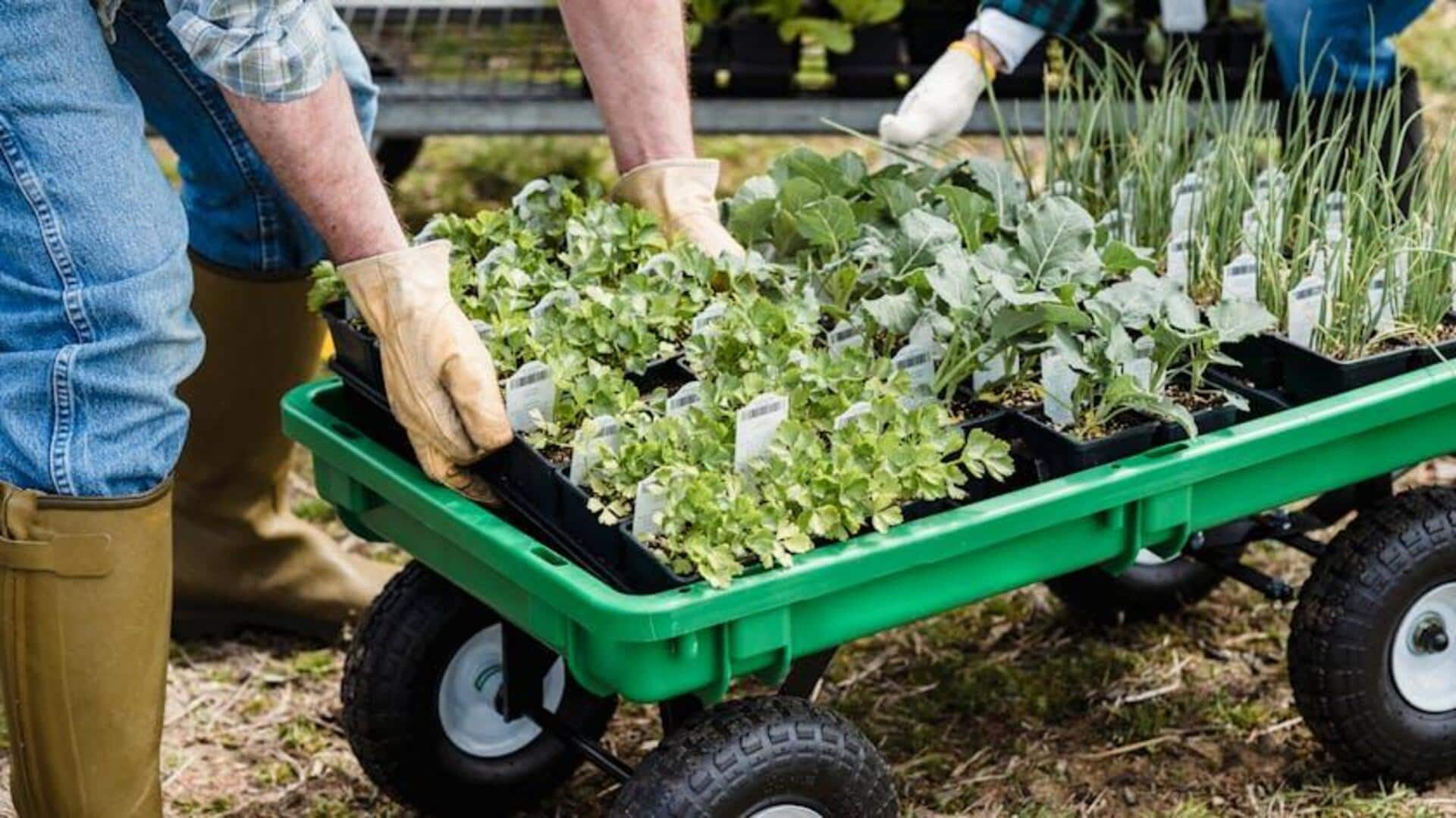
How to grow vegetables at home
What's the story
Gardening vegetables in small spaces can be quite a rewarding task, even if you're short on space. With the right techniques and tools, you can make the most of your area and enjoy fresh produce. Be it a balcony, patio, or just a small corner of your backyard, you can always make the most of it. Here are some practical tips on efficiently growing vegetables in confined areas without compromising on quality/yield.
Container selection
Choose the right containers
Selecting appropriate containers is the key to small-space gardening. Pick pots that are deep enough to allow root growth but compact enough to fit your space. Clay or plastic materials work well as they hold moisture effectively. Make sure each container has drainage holes to avoid waterlogging. Consider vertical planters or hanging baskets if floor space is limited.
Vertical gardening
Utilize vertical space
Vertical gardening is an amazing trick to make the most out of limited spaces. Use trellises, wall-mounted planters, or stackable pots to grow climbing plants such as beans and peas upwards instead of outwards. This way, you not only conserve ground space but also enhance the air circulation around plants, minimizing disease risk.
Plant choice
Select suitable vegetable varieties
Choosing the right vegetable varieties can make a big difference in your success in small-space gardening. Go for compact or dwarf varieties that take less space but produce well. Leafy greens like lettuce and spinach make for excellent choices as they grow quickly and take up the least amount of space. Herbs like basil and parsley also grow well in limited spaces.
Watering methods
Implement efficient watering techniques
Efficient watering is key in small-space gardening, where poor drainage can lead to overwatering problems in no time. Consider drip irrigation systems or self-watering pots to ensure plants get a uniform level of moisture without the risk of excess water waste. Further, adding mulch around your plants will help retain soil moisture and drastically reduce evaporation rates, further optimizing water usage.
Rotation & succession
Practice crop rotation and succession planting
To keep your garden productive all throughout the growing season, practice crop rotation by changing plants' locations each year within your available space. This prevents soil nutrients from depleting and specific pests from building up over time with particular crops. Plus, with succession planting, sow new seeds every few weeks, so you can ensure continuous harvests from early spring until late fall.